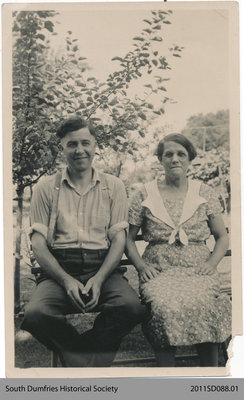
History of the St. George Wagon Works
Robert Snowball's Wagon Shop
Pages
Robert Snowball's Wagon ShopThrough the Hard Time to Public EnterpriseBusiness ExpandedThe End of the Wagon IndustryThe Snowball Wagon Works was the first such establishment in Upper Canada. Robert Snowball, an emigrant from Yorkshire, England, arrived in York in July of 1830. He was 18 years old at that time and searching for a future in the New World.
In 1834, Robert commenced the business of wagon-making on a small scale, associated with a grist mill. He had apprenticed as a wagon and carriage maker before leaving for Canada. The wagon shop prospered, becoming known far and wide. Robert’s work was first class and the prices were reasonable.
With his newly accumulated wealth, Robert Snowball purchased the Bauslaugh farm, part of which later became the village of St. George. He and his family moved there in 1839. He continued to operate the wagon shop as a winter venture, preferring to farm.
Little is known of the products of this manufactory in the early years, but, by June of 1857, the shop was turning out 100 wagons per year of the best workmanship and most durable materials. Snowball’s total income for that season was 15,000 pound sterling.
Around this time, Robert Snowball placed the wagon shop in the hands of his oldest son, William, who was 23 years of age. William was serious about making wagons. Under his management, the shop worked full time and employed twenty-two workers who produced from 80 to 100 heavy wagons per annum. The shop was powered by a steam engine.
In the late 1860s, the production of Snowball’s enterprise significantly exceeded the scheduled orders. In order to reduce inventory, most of the wagons were sold at auction, some at near give-away prices. An imbalance of supply persisted, causing production interruptions. As a result, the shop was shut down for a couple of years around the first months of 1875. It was reopened in November of 1877.

Photo of Violet & Bill Snowball Details
